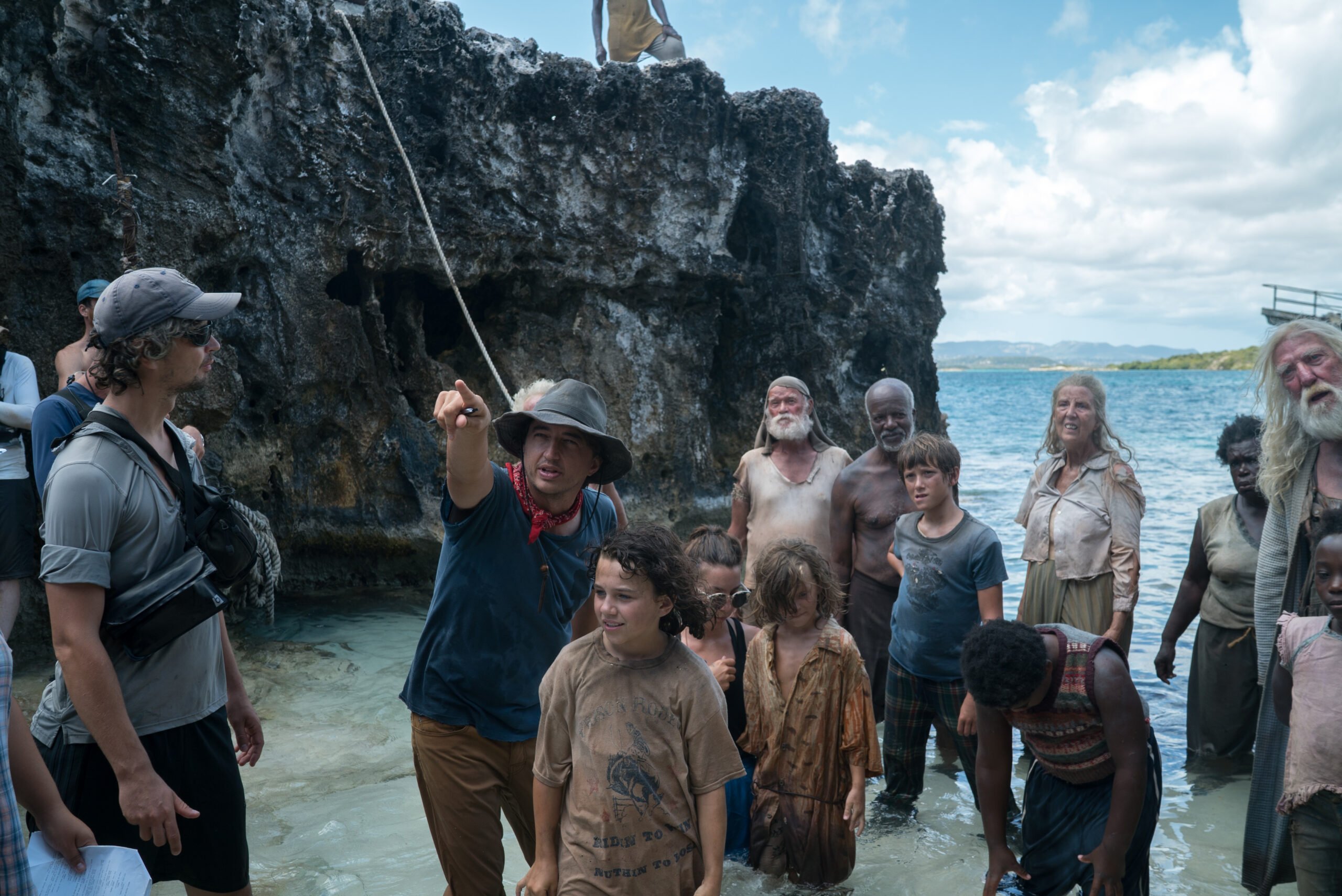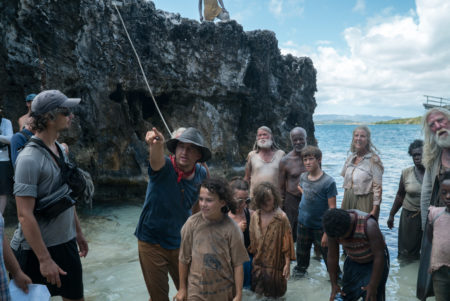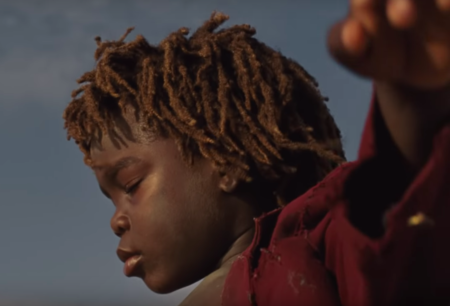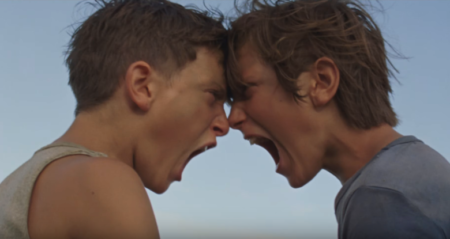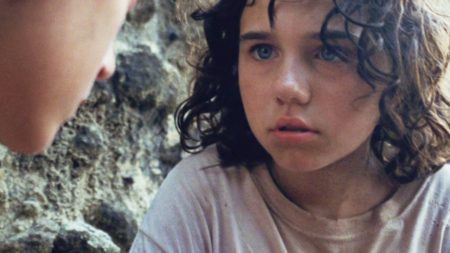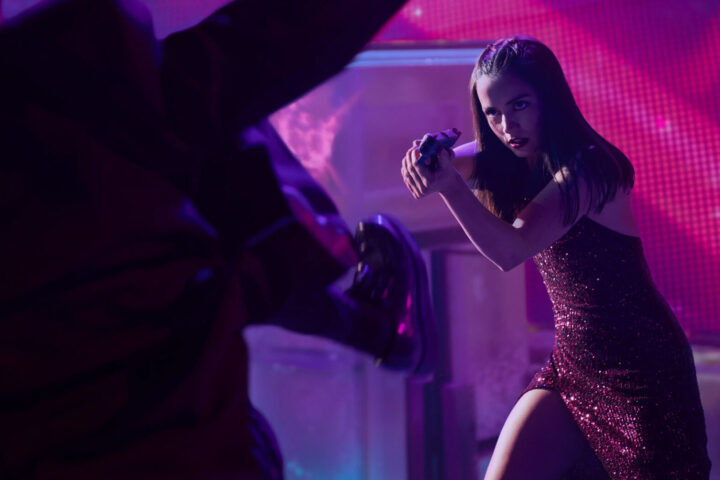Benh Zeitlin’s Oscar-nominated, 2012 masterpiece Beasts of the Southern Wild was a preternaturally accomplished first feature, a richly evocative portrait of a young girl’s coming of age in a Louisiana delta that was part social, and part magical, realism. As a most deserving Best Director nominee, Zeitlin deftly combined elements of fantasy and drama, shot on rising flood waters with a non-professional, regional cast, and created a thrilling portrait of community solidarity and family commitment, and of a childhood teetering on the precipice of lost innocence, poetically rendered by young, Oscar-nominated star Quvenzhané Wallis.
Zeitlin took seven years to create his next picture, which found him on another rugged expedition to the far-flung Caribbean island of Montserrat, complete with a very active volcano as a backdrop, an apropos locale for Wendy, the filmmaker’s very personal, and very revisionist, telling of the Peter Pan tale as a visceral, elemental paen to childhood wonder, told through the eyes of its very young, titular runaway (Devin France) refashioning J.M. Barrie’s beloved character into a fiercely independent and capable adventuress who hitches a train from her rural, southern home and ends up in another land altogether.
I recently caught up with Benh Zeitlin to talk about his very special approach to filmmaking, which incorporates unlikely communities, an adventuresome spirit and in no small part, a desire on the co-writer and director’s part to hold onto, or perhaps regain, his own childhood innocence, through filmmaking as a sort of time machine, a restorative expedition into his own need to re-experience the long gone joys of adolescence. For him, it works, and you can feel this onscreen in every minute of his new film.
Braving years of prep work, local immersion on the island, herculean logistical quagmires and the often challenging hunt for contemporary children with a connection to nature and an unspoiled sense of wonder, Zeitlin found, as he told me, a “beautiful, impossible reality…a miracle.”
Wendy has been a huge undertaking and quite a life experience for you. After Beasts of the Southern Wild, you could have spent the last seven or eight years perhaps making a few simple movies. But you chose to do something all-consuming.
We didn’t really know how to make a conventional movie. We really wanted to protect the methods that made Beasts of the Southern Wild, and the way that we approached that film, which was so unconventional. We invented this way of making our films, from our shorts to Beasts. We had this huge opportunity after that and we wanted to make a film that continued that journey and pushed that process to its most extreme potential; to challenge ourselves and this idea that you can live the movies that you’re making, as you make them, and to take that philosophy to remote islands, and boats, and push what was possible to perhaps new heights
I always think of Beasts of the Southern Wild as being a movie of cultural anthropology. I also felt that in this movie. There is something about your aesthetic that gets close to this very specific notion of community and feeling. I’d love to hear you talk a little bit about this distinct combination of the image, music, and then obviously the conveying of a childlike sense of wonder through those elements. There’s a real exhilaration in your weaving together of those elements.
A lot of it for me has to do with sort of connecting things that are larger than life to real life, and finding where magic is real, where ecstatic feeling is real, and sort of taking this story that is so much a fantasy—with fairies and mermaids and far off lands that don’t exist—and figuring out where that really lives in our world, and where that lives in people and in places that actually exist and you can go to, and then taking that experience and doing this larger than life thing. I am trying to go on this adventure with real people in real places and then just push it to a hyper-real place, but with real elements. We never sort of just go and synthesize something or do it inside of a computer. It’s like, “What can we use?” It’s organic and real to kind of reach, like, a spectacular height of storytelling or emotion, or whatever that is.
You’ve mentioned that this whole idea of children running around, playing outside and doing the things we did when we were kids—maybe we would just would go outside until the sun went down and jump over a fence and play baseball in the woods or whatever—has been, in spirit, lost maybe in kids today. I felt a return to this at several junctures in the movie. I really felt that. For example, there is one sequence shortly after they get to the Island, once they have been immersed into its world and logic, where they’re running over a hill. Do you know the sequence I’m talking about?
Yes. It’s exactly right. I mean, just sort of like charging.
It’s beautiful. It articulated that feeling you described as being lost. I really felt that current running throughout the movie. Can you share how you were able to bring that dynamic to these very contemporary kids acting in the film?
Absolutely. We wanted to make a movie where kids are viscerally connected to nature and they feel very much a part of it and feel one with it, they feel its power, it affects them and they affect it, and we wanted to make an adventure that runs through nature in a way that isn’t clean or antiseptic, where kids fall down and get hurt; to give it such real chaos. It was also to reconnect that feeling of what it is like to play or have an adventure. One of the most shocking things for me came in casting the film, just trying to find kids that play outside and interact with nature and are not completely consumed by whatever they are experiencing through digital screens. It was a real challenge and difficult to find kinds who wanted and loved and really knew how to do that. So finding an actor to play Peter—for whom the forest and ocean were his playground and who could tear through the woods fearlessly and fluently—I was not prepared for how rare that would be. And I was looking for that spirit of adventure.
I understand that Peter Pan was a very personal story for you while growing up.
Oh yes, for sure.
I would bet it still is a personal story for you. Some of the dialogue you’ve written here is so expressive and lovely. For example, ‘What’s your wildest dream, mom? What was your wildest dream for your future?’ There are many lines like that. And others about the loss of those dreams as we become adults. This brings us to this ‘pivot’ idea in the film, from childhood to adulthood, the moment which we as adolescents sometimes believe is the moment real life will begin, if it can just hurry up. We could probably look at any number of films about adolescence and try to chart this transition, going all the way back to Truffaut’s The 400 Blows. It may not be an actual event in one’s life, but more a realization. After I saw the film, I was trying to pinpoint this in my own life but was not quite able to. How did that look through your own lens?
I remember for me it certainly dates back to childhood, if you think about these revelations when the magic of the world just gets drained. I remember telling my sister that Santa Claus wasn’t real. Maybe the bottom line is that it is the moment these magical universes start to crumble for you; there are a million things like that. For me, it’s continued to be a presence because of wanting to be a filmmaker and make my films in this way that is kind of defiant of every practical sense of how you should make a them, or at least in a way that a film would be successful. And in making them, wanting to kind of live these adventures and do things in a way that is maybe reckless and maybe not, but challenges what is possible. As a child, you are constantly being told as you grow up, and then even into adulthood, that at some point you’re going to have to get real. What ‘getting real’ means is giving up your dreams and compromising who you are and settling for something is not the greatest dream that you’ve ever imagined. I feel we tell that to young people in a way that doesn’t recognize how tragic that process actually is. For me, I’ve always tried to be defiant to that and take my own path and do things in a way that will cause my life to be an incredible adventure. So I think the story of Peter Pan has always felt very connected to my path as an artist and what I need to defy to stay free.

Making movies like these, in the process as you describe and yielding what we can see onscreen, obviously does this for you.
Certainly. And it literally makes my life an adventure. The beautiful thing about making films is you can sit down and think, ‘What is the thing in the world that I most want do?’ And then you can write that story and then you live that story, you know? And so for me, after Beasts of the Southern Wild it was like, ‘Man, I really want to disappear, you know?’ So I sat down and wrote this story and designed it to take me to this remote Caribbean Island named Montserrat that ended up being this incredible adventure, or second home journey for me. I was out in the rainforest, in the wild, hiking into the unknown and living the sort of the life that the characters all go to live in the film. The opportunity to live the dreams I had when I was a kid, and do them for real, has always been, to me, a kind of dream opportunity of being a filmmaker.
Sometimes I feel like I want to return to those adolescent places and all these simple things. And sometime I will put on a movie that I saw in, for example, 1982, and I make a point to see it on the anniversary of the release date, at the same time of day that I can recall seeing it theatrically and decades ago. And then I will make the same kind of food or snacks I remember having at that time and place. It just restores something.
Yes, it does!
You mentioned Montserrat. I was astonished to learn how the practical approach to shooting in nature meant that film was done up close to it all. Some of the shots in the film are knockouts, for example, when Peter and Wendy are running close to what appears, visually, to be the volcano, they are actually right there. It is breathtaking. I thought the natural look of the film, the 16mm and grain, was beautiful. Tell me a little bit about shooting there. I mean, it feels like an expedition onto an unknown continent.
There was no infrastructure there whatsoever to do anything and we really had to work with the island to figure out how to shoot this film in these incredibly challenging locations. We were building staircases down cliff faces to access valleys, and then we would have to build ziplines to bring lunch into the valley and zipline it back out. And we built roads across the volcanic landscape to have evacuation routes to be able to go out there and shoot in these places. Every single day was this incredibly visceral, physical challenge to hike into the location in the sun and the dirt with the bugs and everything that was there. We wanted that physicality and experience, and we wanted that connection with reality to really come through in the film.
I feel like that is something that is rapidly being lost, especially in fantasy or kids’ movies that are so created in computers now where there isn’t this sense of what adventure means, in terms of going out into the world. Increasingly, our ‘adventure’ is defined by sitting and looking at a screen and experiencing unreal worlds.
Exactly. And we didn’t want this film to be an escape. It’s like a lot of the history of the Peter Pan story is about escaping to another world and then coming back. We wanted this movie to be about real things in real life and feeling the reality of that adventure, and making those things feel tangible and possible.
Your young actress, Devin France is terrific. There’s a moment where she says, ‘Tell mom I miss her and that I’m wild as hell,’ or something close to that. Great moment. I thought she held the entire movie, many times, in close-up. This did not surprise me given what you accomplished with Quvenzhané Wallis in Beasts of the Southern Wild.
Yes, isn’t she fantastic?
What’s the best part about your job?
It’s hard to pick one thing, but getting to live an adventure and build a family to come along on those adventures is such a privilege and such a miracle. These kids that we went on this exploration with are like my kids now. It’s like that’s my family. It is such a unique group of people you bring together that never, ever could come together in any other context. And you do it to tell a story and to go on a journey—just getting to build a reality like that, one that is otherwise impossible, and the world would otherwise never allow to happen.
Speaking of building communities, you excel at showing us very special, often hermetically sealed communities in each film. We could say that, right?
Yes. And to create that with like intention and principle, and with love- it’s like you build a universe that you keep forever. It’s like I have Cajun parents in South Louisiana, and you know, five hundred-, you know, that’s a whole world for me now. I’m, from New York city and I could never go to that town and be accepted. But when you go as a filmmaker with a project and you include people and collaborate, you build something that becomes your life. And so I have hope. I have a home in South Louisiana now. I have a home in Montserrat. I get to just live this impossible reality that is just beautiful.
